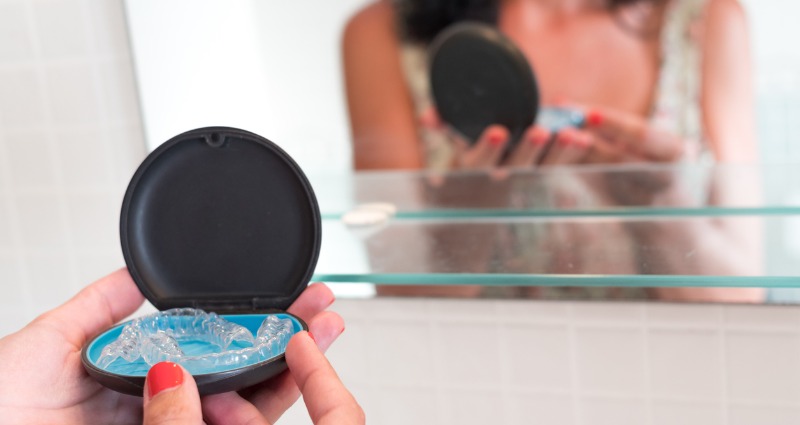
If you’re now wearing your last Invisalign aligner, congratulations! The main part of your treatment journey is coming to an end and you have the smile you’ve been dreaming of. While your active treatment phase may be finishing, you’ll be moving into the maintenance or retention stage.
What is Maintenance After Invisalign?
All forms of orthodontic treatment, whether it’s braces or Invisalign, need some form of maintenance to ensure teeth stay in their desired position. Without maintenance, teeth want to move back to their original positions, undoing the hard work and results of the orthodontic treatment.
To hold teeth in place, a retainer is used at the end of all orthodontics. Patients usually require a combination of removable clear retainers and a fixed wire retainer. The precise style and method of retention depends on many factors relating to your treatment and needs to be determined by your orthodontist to ensure the longevity of the outcome.
How Often is the Retainer Worn?
The orthodontist will advise you on how often your retainer should be worn and when it’s the right time to reduce the number of hours per day you need to wear it. You may need to continue wearing your retainers for 22 hours per day for some time before it’s safe to reduce the hours. If you’re wondering when you can stop wearing your retainer, there’s no simple answer or timeframe, so it’s important to wear your retainer as directed and wait for your orthodontist to indicate the next phase.
Will I Need a New Retainer?
If you wear your retainer as instructed, it should continue to fit. When retainers aren’t worn and one or more teeth shift, that’s when your retainer is likely to no longer fit and this could indicate relapse or a problem.
However, retainers can also wear out. They’re made of very thin plastic, so they’re comfortable to wear and virtually undetectable, but this means that they’re also at risk of being damaged. If you eat or drink anything other than water whilst wearing a retainer, you’re risking a breakage or staining. If you grind your teeth at night, it’s likely that your retainer will wear faster than usual.
Those people who don’t put their retainer back in its case and store it safely may eventually lose or break it and need a new one. Placing a retainer in a napkin at the dinner table or leaving it in reach of a pet can spell disaster for the retainer.
What is a Fixed Retainer?
A fixed retainer is a thin wire attached to the backs of your front teeth as a permanent measure for holding teeth in their correct position. During your final appointments, speak to your orthodontist about whether this will be applied to the bottom teeth, the top teeth, or both upper and lower teeth.
Will I Need to See the Orthodontist Again?
Everyone responds differently to orthodontic treatment. Some people’s teeth are less likely to move from their new position even if the retainers aren’t worn as instructed, while others experience movement months or years after their Invisalign treatment ends. It’s impossible for your orthodontist to know how every patient’s teeth will respond. The only way to know is for the orthodontist to keep seeing the patient through the retention phase.
It’s important to keep up with your orthodontist appointments. It allows your orthodontist to check on your teeth to ensure there hasn’t been any movement, or if a change may put them at risk such as erupting wisdom teeth. Always take your current set of retainers with you to each appointment so the orthodontist can check on their fit and condition. Remember to keep seeing your dentist every six to 12 months to ensure your teeth aren’t suffering from any decay, plaque or periodontal disease which can impact on the health of your teeth.
If you’re ever unsure what the next step in your orthodontic journey is, call, contact us online or ask at your next appointment.